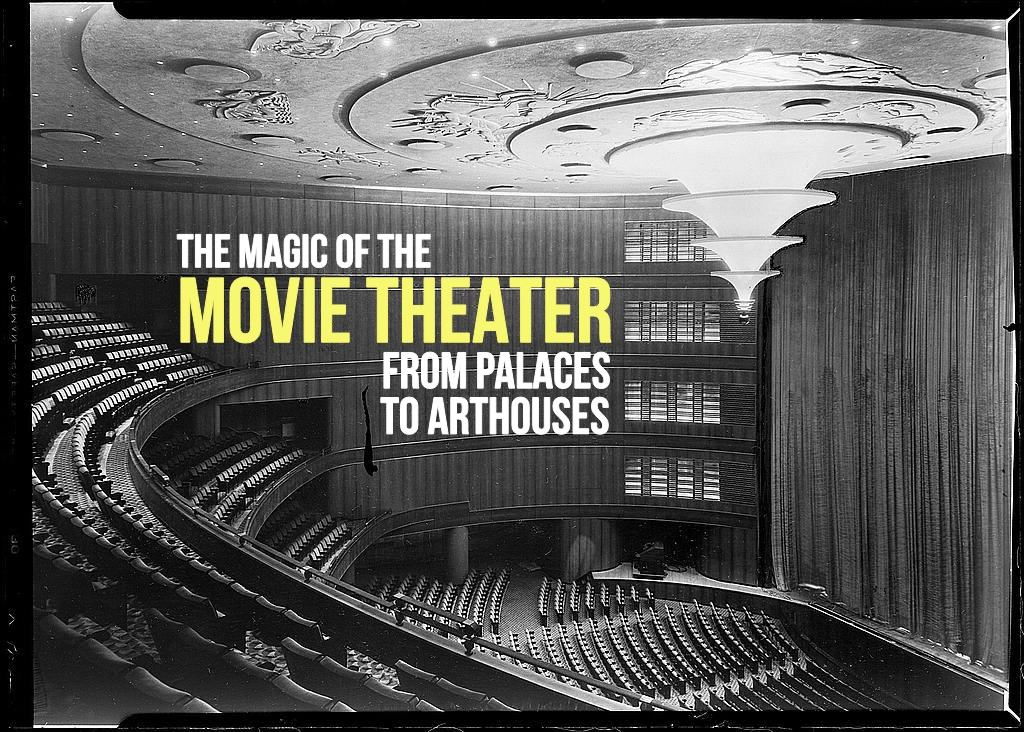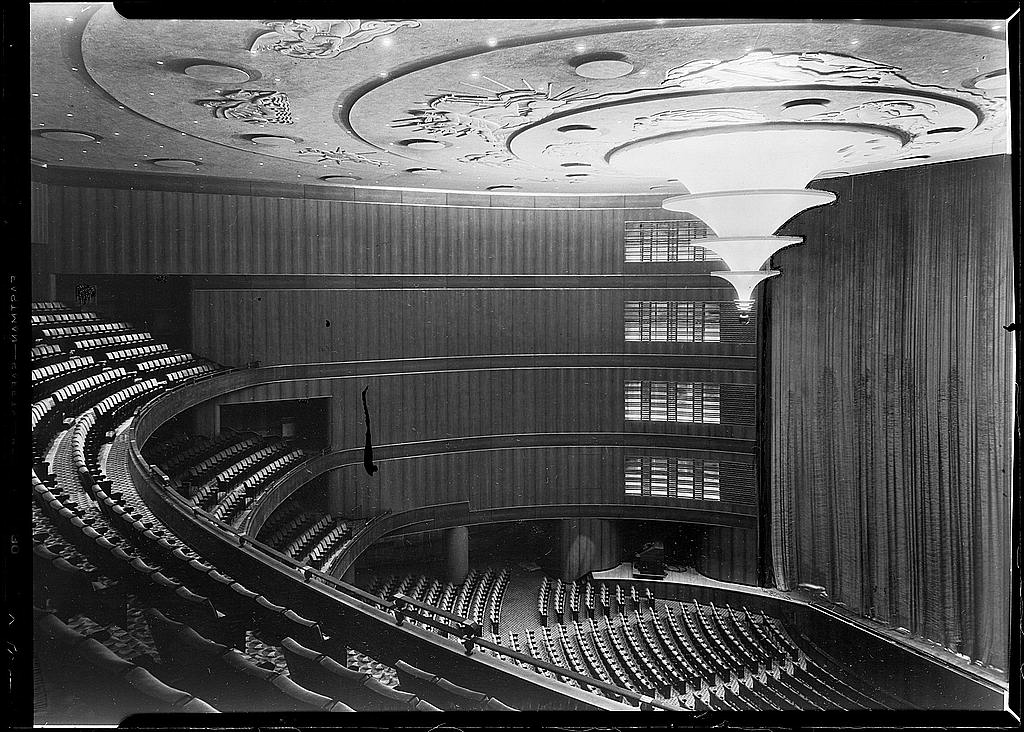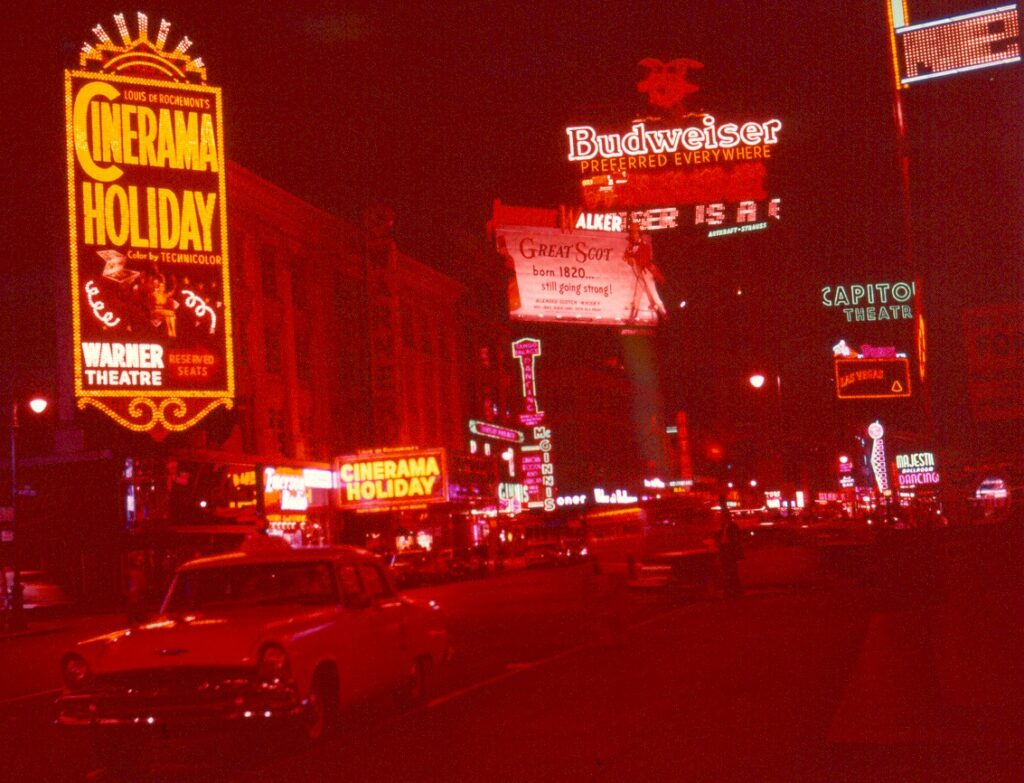PODCAST In celebration of 125 years of movie exhibition in New York City — from vaudeville houses to movie palaces, from arthouses to multiplexes.
On April 23, 1896 an invention called the Vitascope projected moving images onto a screen at a Midtown Manhattan vaudeville theater named Koster and Bial’s Music Hall.
The business of movies was born.
By the late 1910s, the movies were big, but the theaters were getting bigger! Thanks to men like architect Thomas Lamb and the impresario Samuel ‘Roxy’ Rothafel, movie theaters in New York City grew larger and more opulent.
And in Times Square, they were so large that the became known as palaces — the Capitol, the Rialto, the Rivoli, the Strand, the Roxy. They were soon joined by the granddaddy of them all: Radio City Music Hall.

Even by the 1940s, movie theaters were a mix of film and live acts — singers, dancers, animal acrobats and the drama of a Wurlitzer organ!
But a major case at the Supreme Court brought a change to American film exhibition and diversity to the screen — both low brow (grindhouse) and high brow (foreign films and ‘art’ movies).
Today’s greatest arthouse cinemas trace their lineage back to the late 1960s/early 1970s and the new conception of movies as an art form.
Can these theaters survive the perennial villain of the movies (i.e. television) AND the current challenges of a pandemic?
FEATURING: All your favorite New York City movie theaters from A (Angelika) to Z (Ziegfeld).
Listen now on your favorite podcast player:
A special thanks to the website Cinema Treasures for inspiring us for many years and sending us out on many journeys, looking for the great old movie theaters of yore.
Gloria Swanson in The Love of Sunya, which played on the Roxy’s opening night — March 11, 1927.

Gloria Swanson in the ruins of the Roxy Theatre, October 1960.














FURTHER LISTENING
After listening to The Magic of the Movie Theater, check out these similar themed shows from our back catalog:
Nickelodeons and Movie Palaces: New York and the Film Industry 1893-1920
Times Square in the 1970s: Grindhouses, peep shows and XXX neon nostalgia
Radio City Music Hall
The Bowery Boys: New York City History podcast is brought to you …. by you!
We are now producing a new Bowery Boys podcast every other week. We’re also looking to improve and expand the show in other ways — publishing, social media, live events and other forms of media. But we can only do this with your help!
We are now a creator on Patreon, a patronage platform where you can support your favorite content creators.
Please visit our page on Patreon and watch a short video of us recording the show and talking about our expansion plans. If you’d like to help out, there are six different pledge levels. Check them out and consider being a sponsor.
We greatly appreciate our listeners and readers and thank you for joining us on this journey so far.


2 replies on “The Magic of the Movie Theater: A History of Palaces and Arthouses”
Great podcast. I usually listen while at the gym. Did I miss you mentioning the Bleeker Street Cinema? When I left Cleveland in June of 1963 to move to New York, our local art house was showing an Ingmar Bergman festival. When I arrived in the village, the Bleeker Street Cinema was presenting a Marx Brothers festival and I knew I had REALLY arrived.
Admire the archives as child during early 60’s demise of movie theatres. USA it chains or lack participation of audience” misinformation. American television gotten billions advertising contradiction…cause demise of Theatres? Argentina,Romania,Britain,Chile,Portugal and Spain had movie chains majority share holders. Americans before we migrated to USA, Theatre owners new how to approprate. Revenue both movies and live acts note: inaccuracies Television destroyed public interest in attending, movie theatres disagree. Hollywood not international film industry was, incline to submit there films for T.V broadcasting. Somewhat American television productions bought screen plays due censors could.
Never emulated liberal freedom of actual movies…enjoyed your blog. Bought memories to me especially my late uncle once medical practice in New Rochelle, NY. Widescreen films social gatherings of audience color films, which American and Latin T.V. Could had in early 60’s only accepted in mid 60’s I’ll say this to you. When you say regions for films and changes, different for Iberia, Latin America,Portugal and Italy. Once, had large movie houses many larger than NYC ordeal not Television. REITS equivalent to NYC and Toronto prospected rezoned area torn them down! Aftermath younger generation whom grown up (T.V) forgotten movie theatres. Videos home theatres installations also cause demise. Movie audience unfortunately days “exclusive movie appeal” over due.
Online sites and Home theatres Roxy Brooklyn Fox, forgotten Philly Paramount,Mastbaum Theatre initially concept (7,876 seats reduce) and Fox. Destroyed not waning audience owners sold, to REITS higher profits. Due demand of Class A towers American cities.